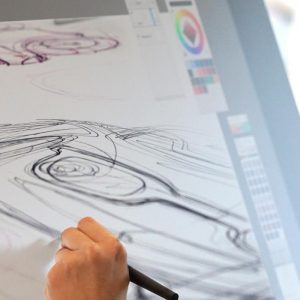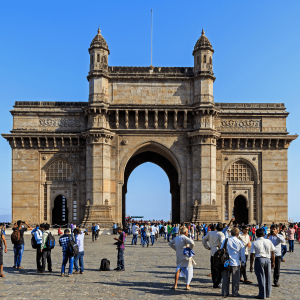If you’re a 10th grader, needing to decide on what stream to pick next year, or a 12th grader, looking for information on the liberal arts, this article is for you! Career decisions are difficult, especially with urban myths about the job market and how employers “only want students from the pure sciences”.
We’re here to debunk these fables. In this article, we will talk about:
- What the liberal arts are
- What topics it covers
- Reasons why you should consider studying them.
- What courses would offer you and the scope for careers in this field?
We hope we can give you a good understanding of the industry so you can make an educated decision. Let’s get started!
What are the liberal arts?
Did you know that four out of five employers said that all students should become well-versed in various liberal arts and sciences? It’s based on a study by the Association Of American Colleges. The study details that students need the skills taught by this course to be successful, and that they earn at least $2,000 more than their counterparts by retirement age than those that went through more specialised fields, like nursing and business.
 So, onto the main question: what are the liberal arts? The degree covered topics like grammar, rhetoric, and logic. They served as the basis for law and military careers. Eventually, arithmetic and philosophy were also added to the mix. The liberal arts were historically considered important for people to be able to lead active, civic lives. Today the liberal arts cover many subjects, ranging from humanities to formal sciences. Some of these are art, literature, languages, religion, ethics, theatre, music, psychology, history, astronomy, biology, zoology, logic, and much more!
So, onto the main question: what are the liberal arts? The degree covered topics like grammar, rhetoric, and logic. They served as the basis for law and military careers. Eventually, arithmetic and philosophy were also added to the mix. The liberal arts were historically considered important for people to be able to lead active, civic lives. Today the liberal arts cover many subjects, ranging from humanities to formal sciences. Some of these are art, literature, languages, religion, ethics, theatre, music, psychology, history, astronomy, biology, zoology, logic, and much more!
As you can see, it’s a diverse subject to study and achieves its aim of creating holistically developed individuals who are creative and independent thinkers. It would give you the skills you need for social, environmental, economic, and political issues.
Here are five reasons why a degree in liberal arts is worthwhile:
-
Liberal arts offer balanced development to their students
Degrees in this field hone critical thinking and creativity, allowing you to balance both. Colleges and employers look for well-rounded professionals, and this is your training to be one.
-
Liberal arts allow you the flexibility to pick a career from a wide range
This is the preparation that you need for diverse careers. This is especially useful because if you’re not sure of what career option to go for right now, you don’t have to commit to one.
-
Liberal arts help students become sensitive, conscious individuals
It will help you become more socially/ culturally aware, and expand your worldview.
-
And the best part
It’s fun! It is an exciting degree and will be more satisfying for creative souls than forcing themselves through pure science fields.
If this isn’t a good enough case to consider an education in liberal arts, here is the scope of work and careers that shall convince you to pursue your hunch for arts!
Courses and scope of liberal arts in India
As we have seen, liberal arts education covers a good variety of fields. Therefore it is not surprising that the college degrees available for students are also just as vast! Let us dive into the available liberal arts courses and possible careers in this domain.
College Education: Political science, sociology, logic, philosophy, literature, creative writing, journalism, history, culture, and music are all subjects for bachelor’s degrees.
Jobs/ Careers: Here are some of the most popular careers liberal arts students go on to have. This list is inexhaustive, but we have tried to cover as many as possible!
-
Advertising and Marketing
Professionals in this domain run advertising campaigns and developed websites. Median annual salaries here run to $133,380 (2021).
-
Public relations specialists
Specialists in this field help shape the public view of the company. Professionals use strong communications skills and social media programs are used to increase engagement with the public. Median annual salaries are around $62,200 in this field.
-
Graphic designers
Graphics designers use art and creativity to convey information. They also often work in the marketing domain, though there also tend to be many other specialisations. Other areas of focus also include typography, Median salaries tend to be around $50,000 or more.

-
Editors and writers
Professionals with specialisations in English work on writing and editing/ proofreading, and so on. Median salaries tend to be anywhere between $63,000 to $78,000.
-
Historians/ curators/ archivists
Is history your jam? Do you yearn to collect, study and interpret historically valuable documents? If so, this specialisation in liberal arts is for you! Median salaries here tend to be between $50,000 to $63,000.

-
Human resource specialists and counsellors
If your interest lies in resolving conflict and dealing with the hiring, payroll, and onboarding of employees, or in helping individuals recover from mental health issues and behavioural problems, then a specialisation in psychology is the direction for you!
Liberal arts professionals can also be found successfully working in fields like journalism, teaching, programming, fashion design, museums, and even politics. The most important part is to select a specialisation that matters to you and a college that provides you with opportunities to explore.
How can ISDI help:
ISDI offers various design programs such as Strategic Design Management, Product Design Fashion Design, Fashion Communication and Styling, Interior Design and Strategic Design, Communication Design, and Management. Pursuing one of the degree programs, that is, Bachelor in Design (BDes) – 4-year program or Postgraduate In Design (PGDI) – 11 months program. Either of the programs is an alternative to a career in fashion and design.
The ISDI campus is located in the business district of Mumbai, the commercial centre of India. ISDI consists of a curriculum that is based on that of the Parsons School of Design, experienced and industry-leading faculty, and practical project-based training, all situated on a state-of-the-art campus. ISDI is just the right place for someone looking to start a career in design.









